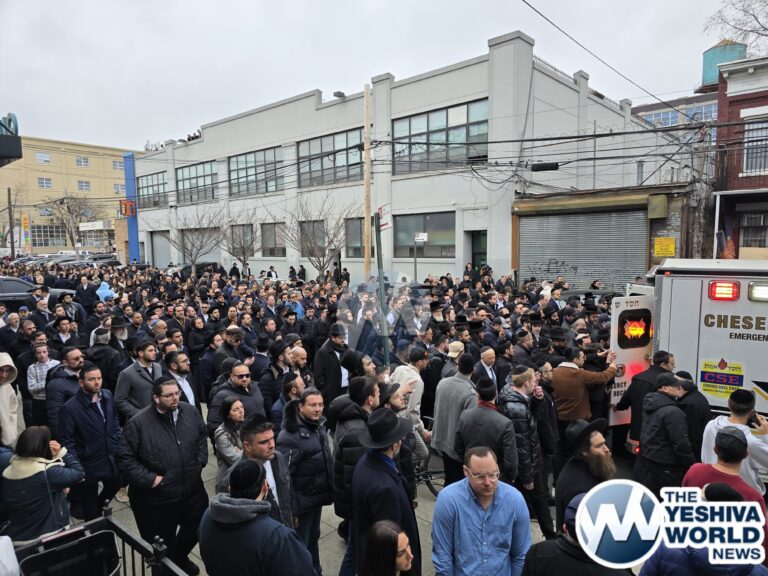The following is a brief overview of some of the halachos and customs of Purim Meshulash, drawing on several sources.
As is well-known, Purim is celebrated in Jerusalem (and other cities that were walled at the time of Yehoshua), a day later than other cities, on the fifteenth of Adar – Shushan Purim.
This year, there will be a Purim Meshulash, as the fifteenth of Adar falls out on Shabbos. Residents of walled cities will fulfill the mitzvos of Purim over a three-day period: Kriyas Megillah and Matanos L’Evyonim are fulfilled on the 14th, like in unwalled cities. On Shabbos, Al HaNissim [and additions to Kriyas HaTorah] are said, and on Sunday, shalach manos are given out and the seudah is held.
Why do walled cities celebrate over a three-day period on Purim Meshulash rather than fulfill all the mitzos on Sunday? Kriyas Megillah is forbidden on Shabbos [lest one carries the Megillah in a public domain], and according to Chazal, since the Megillah says that the days of Purim “should not pass by,” it must be read earlier rather than later [unlike Tisha B’av for example, which is delayed to Sunday when falling out on Shabbos].
Matanos l’evyonim is fulfilled on the 14th and not delayed until Sunday since the Gemara states that matanos l’evyonim should be given on the day the Megillah is read because the poor expect it then and they’ll be able to benefit from it as early as possible.
Seudas Purim is delayed until the 16th and not fulfilled on Shabbos so as not to mix one simcha with another simcha. Giving out shalach manos, while not forbidden on Shabbos, can lead to chillul Shabbos [carrying], so it is fulfilled on Sunday as well. Also, most poskim hold that shalach manos should be given out on the 16th since it is the main Purim day, based on the Rambam, who hints that the seudah and shalach manos are interrelated.
However, some poskim hold that Yerushalmim should give out a small amount of shalach manos on Friday and Shabbos [if possible]. Other poskim say that guests at the table can fulfill the mitzvah of shalach manos.
Although Friday is not Purim in Jerusalem, it is customary to wear Shabbos clothes in honor of the Megillah reading as well as to serve extra food and wine at the Shabbos meals, making the seudos more special in honor of Purim.
(YWN Israel Desk – Jerusalem)












3 Responses
This brings true unity by everyone reading the megilla the same day, Friday.
There is a chumra of having four seudos this Shabbos in mukkafos, and to get in the shitta of mishloach manos on Shabbos as well (kinyan not necessary for food), I once had everyone at the Shabbos lunch table switch plates. It’s also one of only two possible instances that I can think of, of repeating the same haftara two Shabosos in a row (the other one is Halo Kivnei Kushi-im for both Acharei Mos and Kedoshim when nifrados, according to the Levush & some Briskers). For Megilla shelo bizmanah on Fri (the only case we have of makdimim), we try to get 10 present for pirsum, even when reading for 1. With <10, there is a machlokes on whether to make even the b’rachos rishonos, though minhag Y-m seems to be generally b’dieved to say them anyway. There is also a machlokes on whether to say Al HaNissim after the seuda on the 16th. Most Ashkenazim do not. People in Yerushalayim get an extra day off (as if many people are going into work now). Anyone doing Purim Meshullash for the first time should go over the halachos and minhagim with their rav beforehand. Often people also study the halachos of Erev Pesach she-chal b’Shabbos, as according to a”t ba”sh, they always occur in the same years. (the Adar ha-samuch l’Nisan is always chaseir, so there is no variability between Adar and Nisan, if fact there is no variability from the 1st of that Adar (i.e. the only Adar or the 2nd Adar), all the way forward to the following 29th of Cheshvan, so knowing the day of the week for any date within that period will deductively determine the day of the week fir any other date).
– and any date within that period can only fall on four possible days of the week, one very seldom – which is the way it falls this year – and never on the other three.